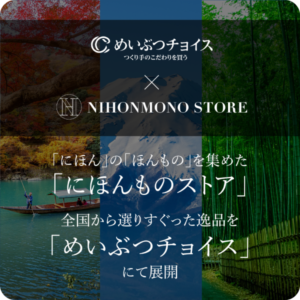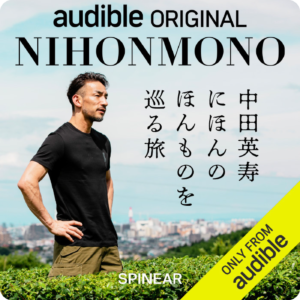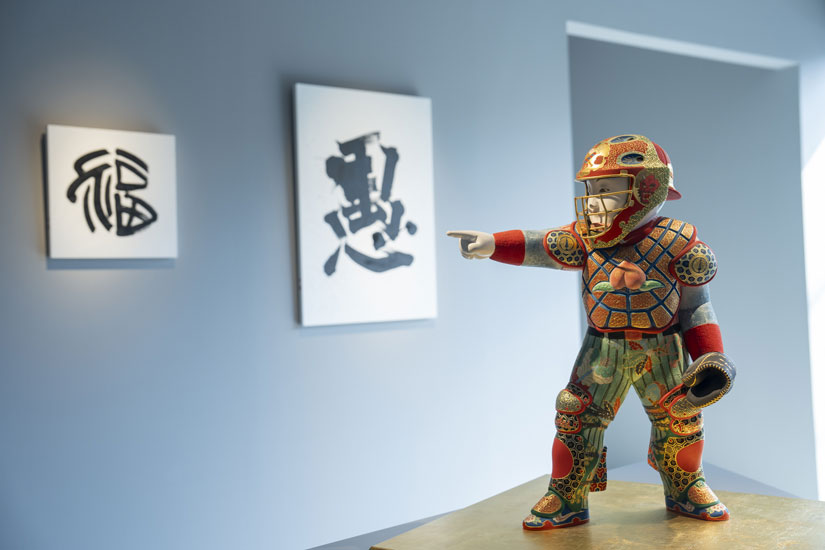Hakata dolls have been made in Fukuoka City, Fukuoka Prefecture, for about 400 years. In fact, the general term for clay dolls made in Hakata is Hakata doll, and there are many different styles of Hakata dolls. Young Hakata doll maker Mr. Hiromine Nakamura, the fourth generation of Nakamura Ningyo, is one of those who have been attracting attention in the Hakata doll world for his particularly original works.
Nakamura Dolls have been in business for four generations since the Taisho Era (1912-1926)
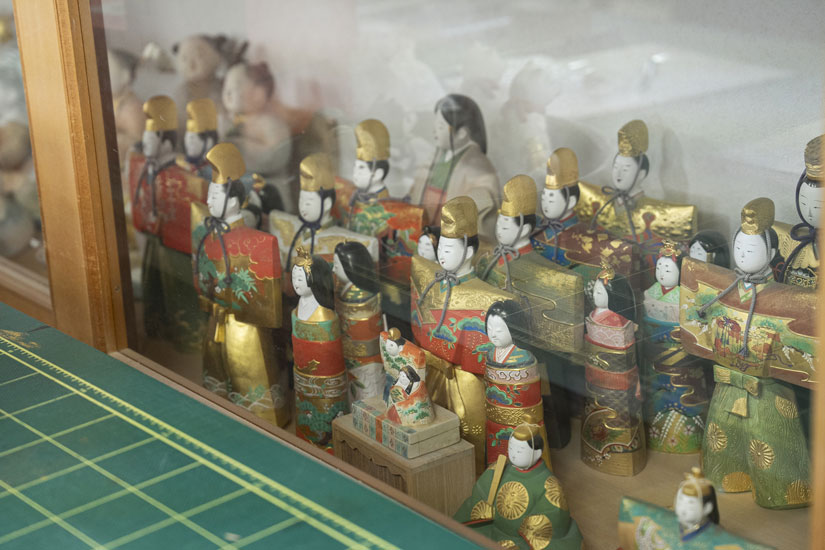
Nakamura dolls began in the Taisho era (1912-1926). Chikuami Nakamura, the first generation, was born into a wealthy family of what today would be called investors and rice marketers. At the age of 13, he began an apprenticeship with the Nakanoko family, a prestigious Hakata doll maker, and nine years later, in 1917, he started his own business. Since then, the baton has been passed from father to son: Engai the second, Shinkyo the third, and Hiromine the fourth.
What is the charm and role of dolls?

The Nakamura family, which has been involved in Hakata dolls for generations, has continued to look at the role of dolls in its own unique way. Unlike pottery, textiles, and other crafts used in daily life, dolls do not have a function to be “used. Nevertheless, the value of dolls lies in the fact that they appeal to people’s hearts and have been handed down through generations as a reflection of culture and the times.
In fact, Hiromine-san has been interested in this aspect of dolls since he was a child. However, as he faced the dolls as a puppeteer and had many conversations with the third generation, he realized that “dolls also have a function. That is to pray. For example, Ohinasama and May dolls have been made to pray for the healthy growth of children. Sometimes, a doll placed in a small corner can comfort the heart. Nakamura understands that there is a “beauty of use” in dolls, and that is why dolls are considered one of the traditional crafts. A doll is a form of human prayer. And being a dollmaker is the job of giving shape to people’s prayers.
The Nakamura family’s doll making is based on free ideas while inheriting tradition. This is because they believe that the role of “prayer” played by dolls will never change, even if the times change. For more than 100 years, Nakamura has been making dolls that give people dreams and hopes.
Oriental and Western “Doll Sense
According to Hiromine, dolls are “something between God and man. However, this is a Japanese way of thinking, and is slightly different in the West. In the West, there is first a god, and then a human being is created by the god in his own image, and a doll is created by the human being in his own image. In other words, they are often understood in the order of God, man, and doll. On the other hand, most of Asia, including Japan, is polytheistic, and nature worship is a fundamental part of their religion, so God = nature, and then there is man, and dolls are made to connect the two. In other words, the composition of the God/man and the doll is the link between the two.
Because of this difference in thinking, when Mr. Hiromine once described Hakata dolls as “dolls” overseas, they were considered “low status” and “not art,” and in some cases he was refused the opportunity to exhibit them. Since then, Mr. Nakamura has described Hakata dolls as “sculpture” or “art,” and he believes that this single action is a step toward bringing the appeal of Hakata dolls to the world.
The “Athlete Series” has received high acclaim even from overseas.
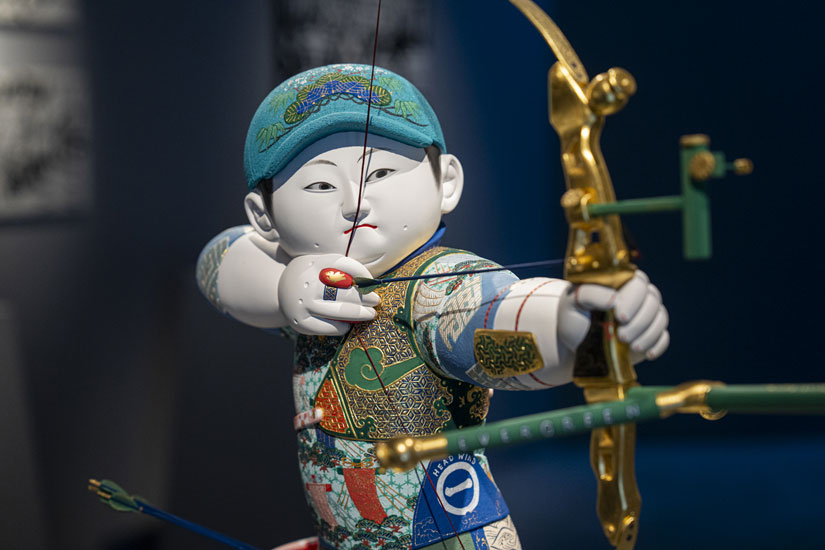
One of Hiromine’s representative works is the “Athlete Series,” featuring baseball, archery, and professional wrestling players. What triggered his attention was winning the Excellence Award in the 2017 Kanazawa World Crafts Competition at the 3rd Kanazawa World Crafts Triennale held in Kanazawa in 2016.
From the outside, it may seem like smooth sailing for Hiromine, who had decided since nursery school that she wanted to become a dollmaker after studying sculpture at the Tokyo University of the Arts. However, according to Hiromine, even in the midst of his fulfilling days, there was a sense of impatience.
This is because in the Nakamura family, “doing things differently from generation to generation” and “not making dolls that look like their parents” have been handed down from generation to generation. His father, Shinkyo, while carrying on the tradition and techniques, has created a wide range of works, including portraits, monuments, and dolls for the Hakata Gion Yamakasa festival. In particular, he has worked on dolls based on the theme of the Tensho Mission to Europe, and in 2011 he had an audience with the Pope and presented a doll to him. While watching his father’s back as he pursued his own themes and was highly praised by the world, Hiromine always felt the “pains of creation.
The “Athlete Series” was born out of this struggle, just in time for Mr. Hiromine to make his first May doll for his own child. When I tried to be too traditional, my friends from art school would not respond,” he said. As I struggled between the two, I realized that this was the only time to create a “radical work that would resonate with both sides,”” said Hiromine. He then reinterpreted the May dolls himself. He came to the conclusion that the motifs of Momotaro and Kintaro, May dolls, had always portrayed the heroes of the times, and this overlapped with the image of today’s athletes.
How Hakata Dolls were born
The lively forms and beautifully detailed colors of Hakata dolls are a testament to the beauty of Hakata dolls. Hiromine’s dolls attract the viewer’s attention because of his new ideas built on top of his solid skills.
The process of making Hakata dolls involves a number of steps using traditional techniques. First, clay is kneaded and shaped using a spatula and fingers. Once the prototype is complete, the head, sleeves, and other parts are all divided and a plaster mold is made. Then, the clay is pressed into the mold with fingers to a thickness of about 7mm. Each hollow part is created. This is called “dough pressing. Then, each piece of dough is glued together again with a dovetail and formed. After drying and firing, the baked pieces are painted with pigments dissolved in glue or rock paints, and finally completed. Sometimes a one-of-a-kind piece is created by hollowing out the prototype directly from the original, without going through the process of mold making. Making dolls requires much more time and effort than making statues. When you look at the dolls again with the process in mind, you will feel even more excited.
The Future as a Doll Artist

Having found his own direction with the “Athlete Series,” Hiromine is now receiving a variety of offers. He has been introducing new forms of Hakata dolls, a traditional craft, to the world one after another, such as “Gojira of Remembrance” (2023) created for the 70th anniversary of “Godzilla” and “The Lion of Time” that decorated the show window of “Grand Seiko Boutique Omotesando Hills” at the opening of the boutique.
A Neutral Receiver
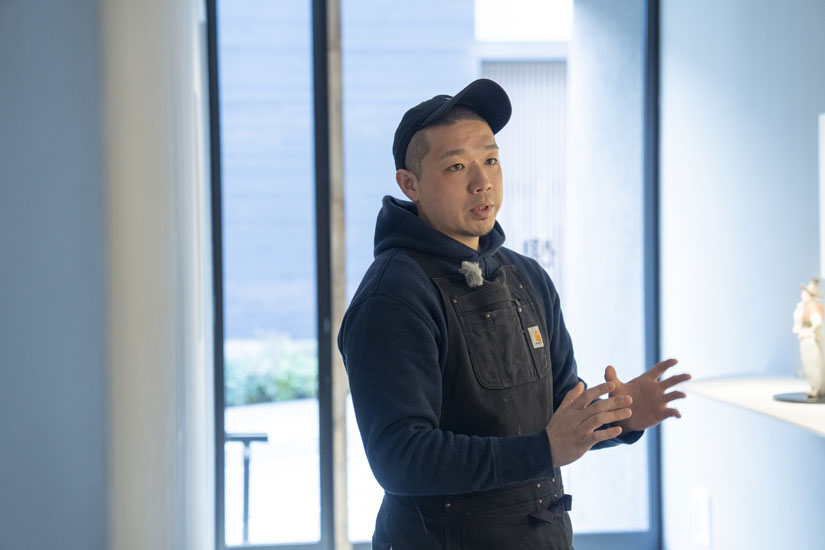
At the same time, Hiromine’s style is to respond to offers other than doll-making, such as designing the obi sash for the Hakata Gions Yamakasa festival, original drawings for animations, and 3D modeling. This is largely due to the family motto that has been passed down in the Nakamura family for generations, especially the third generation’s words, “Be a neutral receiver. He says, “By responding to a variety of things, you can see what you want to see. I also think I can tell people that puppeteers can do such interesting things.
Creating dolls that reach the hearts of people today
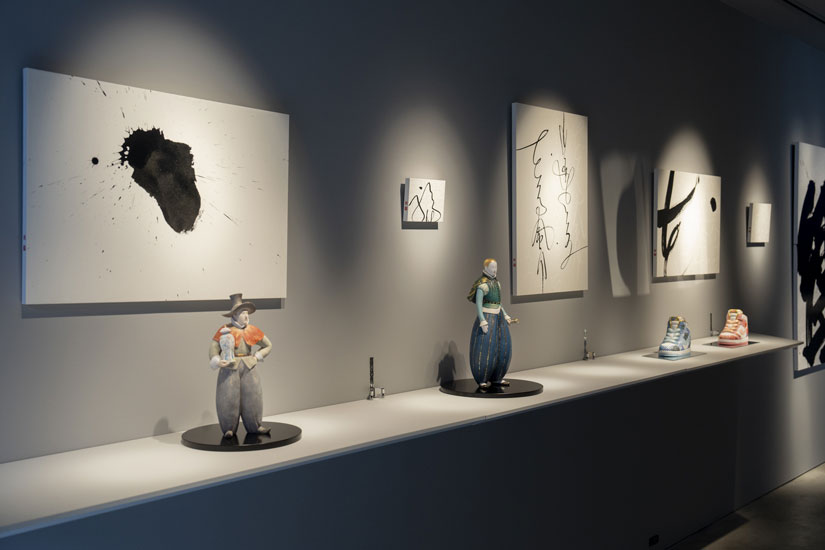
Hirofumi now faces the challenge of making dolls under the scenario of an Edo period doll maker who, by chance, travels back in time to the present day. In the Edo period, people visited doll stores in search of dolls.
I believe that dolls have unlimited possibilities as long as human beings exist. Dolls are a comprehensive art form that has something to offer not only in their shape, but also in the clothes they wear, their personal belongings, and everything else. I would like to deepen that part of my art by using my techniques and knowledge. It might be interesting to put a real embroidered stadium jacket on a doll. In April 2023, Hiromine will open a private gallery, “KAIGEIDO,” a one-minute walk from Nakamura Doll Studio in Sakurazaka, Chuo-ku, Fukuoka City, featuring not only the works of the third and fourth generations, but also those of Hiromine’s sister, FU Nakamura, a calligrapher, and overseas artists. The gallery also features works by the third and fourth generations, as well as those of Hiromine’s sister, Nakamura Fuku, a calligrapher, and other overseas artists, and holds genre-less exhibitions. One cannot help but look forward to a new wave of artists who are not bound by traditional craftsmanship, but rather incorporate the “now” and face the modern world.
